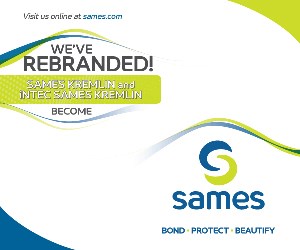Producing suitably clean metal parts may not be as simple or straightforward as one might think. Today’s parts cleaning industry faces numerous challenges that can make the selection of an effective critical cleaning system difficult.
For some industries, it is essential to utilize a high-quality cleaning process to ensure that metal parts are free of contaminants that could negatively affect their performance, leading to catastrophic failures in some cases.
So, how do you know when your parts are clean enough? Criteria for a successfully cleaned part may be provided in specifications, government regulations or testing methods with the requirements that must be met, but generally a successful cleaning process results from the combination of four factors:
Time: the amount of time the parts undergo the cleaning process.
Temperature: the temperature at which the process operates, which may affect both the part and the stability of the cleaner.
Mechanics: the physical process used to remove the soil, such as ultrasonics, spraying, soaking and scrubbing.
Chemistry: the chemical composition of the cleaner.
All of these factors can be adjusted to find the combination that will result in a suitably cleaned part, meeting the defined critical cleaning requirements for that application.
The Challenges
Those in the metal cleaning industry face a number of challenges that may hinder their success with critical cleaning. As mentioned, there are constantly increasing quality requirements demanding low residual contamination. In addition, the parts that must be cleaned are becoming more complex. They may have multiple materials together on one part or complex surfaces to clean. It can be extremely difficult to sufficiently clean narrow holes, channels, grooves, and ridges with no residue left behind to attract further contamination.
There are challenges from an operational standpoint as well. The ideal process should be reliable, with a minimum amount of effort to maintain. It should also provide excellent cleaning performance, consistently, without having to do additional cleaning steps or re-work. The process should demonstrate maximum effectiveness for low cost, therefore, giving a good value for the money invested. Applicable safety and environmental standards must be met with the process in control and the risks managed.
Unfortunately there is no single cleaning system that will work perfectly every time and for every given situation. The challenge is to find solutions that will provide the maximum benefits for your process with minimum disadvantages.
The Choices
There are many cleaning products on the market, most falling into either aqueous or solvent categories. Do they all work? Yes—in varying degrees and varying situations. Will they work for your process? It depends!
Before choosing a cleaning solution, it’s best to understand what soils you’re trying to remove from the metal surfaces. If the contamination is limited to things like salts, dirt, metal particles, black carbon or graphite, an aqueous cleaner may be most effective.
If the contamination also includes non-polar materials such as oils, waxes, petroleum, fats, corrosion inhibitors or esters, for example, a solvent would likely be a better choice.
It is important to note that cutting fluids, metalworking fluids and lubricants (which are removed during the metal cleaning process) are not just made of oil. They are formulated products that may also contain antioxidants, detergents, stability additives, corrosion inhibitors and defoamers. All of these components are contaminants and form degradation products (such as acids) that can affect the stability of the cleaning fluid or result in corrosion of the system or metal parts.
Choosing a cleaning fluid that can remain stable and manage the degradation products becomes a significant factor in the success of the critical cleaning process.
The Solutions
When comparing aqueous and solvent cleaning systems, one should first understand that aqueous cleaners are not simply water. They are also formulated products that contain acids, bases, surfactants, abrasives or other materials. While typically effective for non-critical metal cleaning and generally viewed as more environmentally friendly, some of the disadvantages may include difficulty cleaning complex parts with small holes and crevices, and additional rinsing and drying steps, which requires more floor space and lengthens the process cycle time
Chlorinated solvents (methylene chloride, trichloroethylene and tetrachloroethylene, also called perchloroethylene) also are highly capable of meeting the challenges for critical cleaning applications.
These solvents provide excellent solvency for non-polar materials, are non-flammable and are easily used in the vapor phase. Their low surface tension enables removal of soils in small spaces, which is ideal for complex metal parts. These solvents contain stabilizers to counteract the acids that form from contaminant degradation, and can be easily distilled and re-stabilized to extend the solvent life. This makes them especially cost effective compared to the more expensive and less stable options in the marketplace.
The main disadvantage to chlorinated solvents relates to environmental and personal exposures. These solvents are subject to federal regulations, including reporting under the National Emissions Standard for Hazardous Air Pollutants (NESHAP), which is specific to solvent cleaning operations.
Chlorinated solvents have been around for over 50 years and are some of the most studied chemicals available. Therefore, their use, storage and disposal are well understood. The hazards of these products are characteristic of the chemicals themselves. The management of the risk is what makes the safe use of these materials possible, in the same way that managing the risks of using electricity allows for its common use.
Using a vapor degreaser that meets the NESHAP requirements minimizes exposure to chlorinated solvents. The best option is using a sealed vapor degreaser (with or without vacuum), which virtually eliminates emissions from the metal cleaning machine.n
Sherry Emmrich is a technical manager Safechem North America, a subsidiary of The Dow Chemical Co. For information, please call 877-376-8343 or visit dowsafechem.com.























